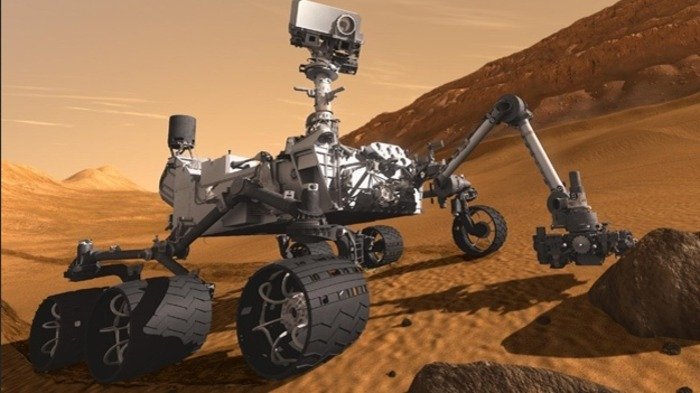Credit: NASA
NASA says its Mars Curiosity rover will finish up its scientific investigations in its initial landing area -- working in an area smaller than a football field -- and enter a "distance-driving" mode ... but don't get too excited. We're talking about a five-mile "road trip" that's going to take months.
While Curiosity can certainly move -- it's called a rover, after all -- it does so at its own pace, as commanded by signals sent to it by controllers at NASA's Jet Propulsion Laboratory in Pasadena, Calif.
The fact that the 1,982-pound Curiosity is about the size of an average car doesn't mean it can move at anything near car-like speeds.
The rover's top speed, it's "pedal-to-the-metal, we've got places to go, things to see" speed? 1.5 inches per second.
That's 7.5 feet in a minute, or to put it in car-like terms, 0.085 mph.
Curiosity hasn't moved far from its initial landing site since touching down on the Red Planet last August. Working in the Gale Crater, is has twice drilled rocks for samples to analyze in its on-board laboratories, samples that suggest Mars could have supported microbial life long ago.
It's moved just short distances while doing so; since it's landing Curiosity has racked up just 2,405 feet on its odometer.
That's been by design, NASA scientists say.
"We needed a more deliberate pace for all the first-time activities by Curiosity since landing, but we won't have many more of those," Mars Science Laboratory Project Manager Jim Erickson at JPL said.
Now, NASA says, the rover will embark on the mission it was originally intended for.
"We're hitting full stride," Erickson said.
The destination for Curiosity's upcoming long-distance trek -- chosen as the rover's ultimate goal even before the mission's launch in November 2011 -- is the base of Mount Sharp, a towering bit of Martian topography that rises 3.4 miles above the Red Planet's surface.
Scientists say they believe Mount Sharp holds many answers and expect Curiosity to reveal the Red Planet's past environmental history as it traverses Mount Sharp's lower reaches.
"It's like looking at -- kind of -- the layers in [the] Grand Canyon," Curiosity deputy project scientist Joy Crisp said. "It's preserving a record of how things were in the past and how they changed, as you go from the older rocks at the bottom to younger rocks at the top."
Curiosity's controllers say they're hesitant to circle a definite date on the calendar for the arrival at Mount Sharp, admitting they don't know how long the drive will take.
It will be several months, at least, but that could change depending on what Curiosity comes across on the way and the detours it might have to take for safe passage, they said.
When it gets there and clocks up the 5 miles or so, it will not be the Mars mileage champion, NASA notes; that honor goes to its cousin Opportunity, a smaller rover that's been on the surface of Mars since July 2003 and has racked up 22.2 miles in total driving distance.
Road trip, anyone?















